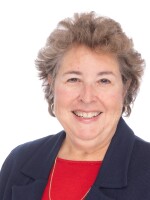As the founder of a regional environmental group— The Chesapeake Climate Action Network— Mike Tidwell had spent twenty years lobbying for green energy, convinced that if people switched from fossil fuels to solar, wind and geothermal, the planet could be saved.
Then, in 2018, his D.C. suburb— Takoma Park— saw record rains.

“In Maryland we got more than two feet more rain than normal on an annual basis," he recalls. "Virginia set a record. All the way to the Carolinas, to New Jersey, and it soaked the soil so profoundly that it triggered the explosion of a mold underground called Phytophthora.”
Their roots weakened by that mold, giant oaks put out a chemical distress call.
“They vent a gas called ethanol as part of this chemical process, and ambrosia beetles are like hound dogs. They live to smell ethanol, and they follow it," Tidwell explains. "They began drilling into the trees, and a period of fascinating chemical warfare went on between the trees and the beetles. The trees would flood the initial wound with a bitter-tasting tannin. The beetles would keep drilling, and then the trees would send out another scent to insects that like to eat ambrosia beetles, saying there’s a meal on my trunk. Come get it.
But beetles eventually overwhelmed the trees. Twelve hundred of them would die over the next two years.
“We have these fantastic tree stumps that are left behind – tree stumps of 150-year-old trees. Many days it feels like we’re walking through a graveyard and people mourn and grieve over these lost trees. One arborist told me when a tree dies in a national forest, it’s a statistic. When it dies in your backyard it’s a friend.”
In January of 2023, daffodils bloomed in Maryland and Virginia. That same year, Washington, D.C. recorded the world’s worst air quality as forests in Canada burned, and Tidwell concluded green energy alone could not save the us. We would have to find technologies that remove carbon from the atmosphere and cool the earth – collectively known as geo-engineering. One idea was inspired by volcanoes.
“Volcanoes naturally emit sulfur-dioxide into the stratosphere when they erupt, and that reflects sunlight away from the planet. Mt. Pinatubo in 1991 put enough sulfur into the stratosphere that it cooled the planet by more than a degree Fahrenheit for more than a year. Basically, this one volcano erased a century of global warming.”
So what if people, using balloons and airplanes, began spreading sulfur dioxide into the stratosphere? Some scientists fear unintended consequences, but in his memoir— The Lost Trees of Willow Avenue— Tidwell argues we no longer have no choice.
“Scientists tell us that we have passed the safe level of carbon dioxide in the atmosphere. If we’re really going off a cliff with climate change, and clean energy can’t stop that and negative emissions technology is not ready, do we have any other options. Is geoengineering risky? Of course it is, but risk compared to what? Compared to runaway climate change so bad that you can document climate change right outside your front door?
But, he says, we dare not do anything without consulting our global neighbors.
“We need discussion. We need research. We need limited testing. We need to figure out if rainfall is disrupted in one part of the world, how can the rest of the world compensate that region.”
Tidwell will speak at Fountain Books in Richmond on Earth Day, April 22nd at 6. The book is The Lost Trees of Willow Avenue: A Story of Climate Change and Hope on One American Street.

